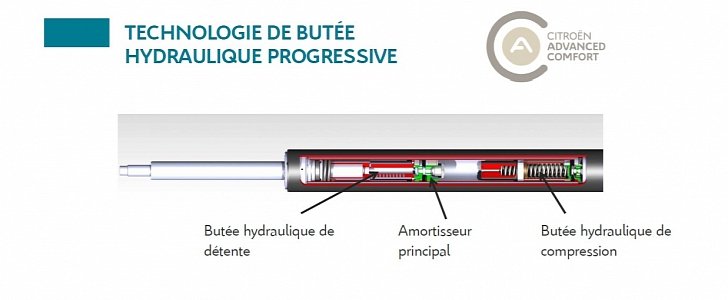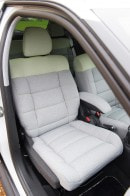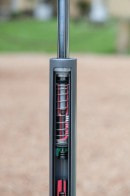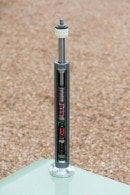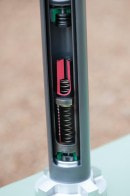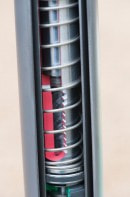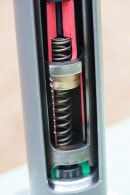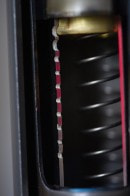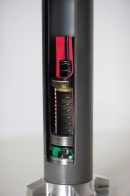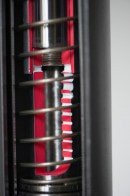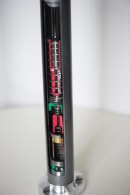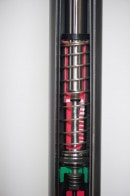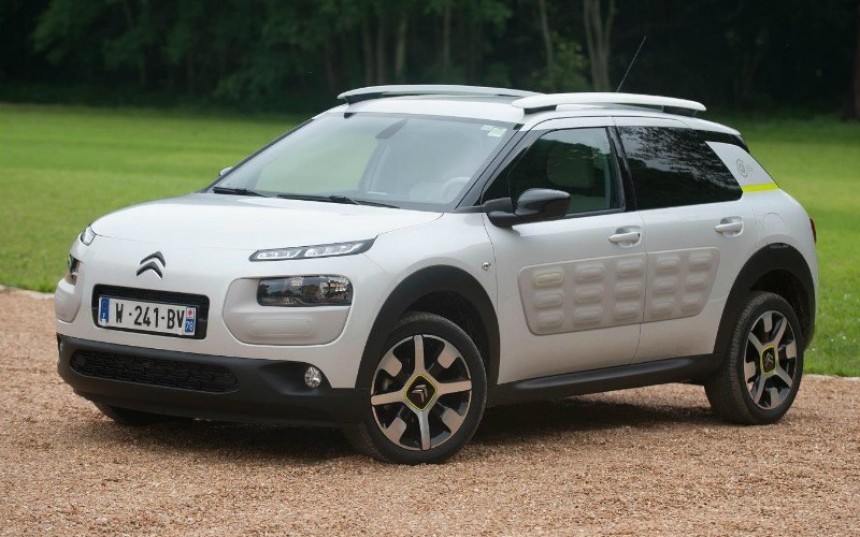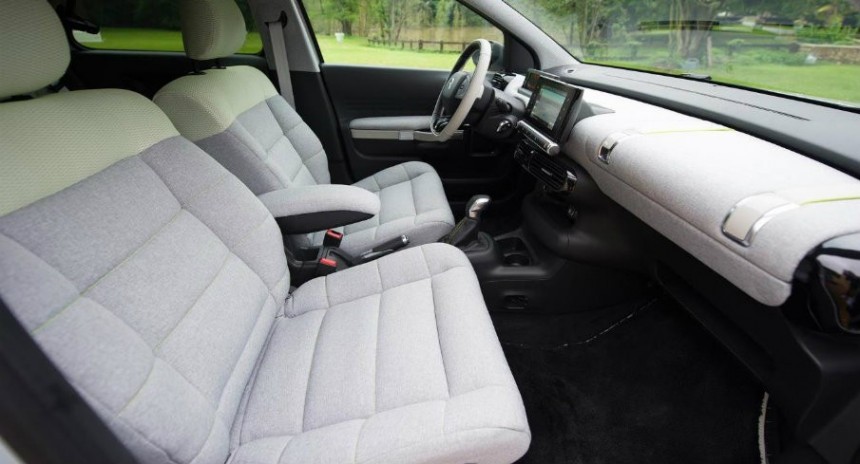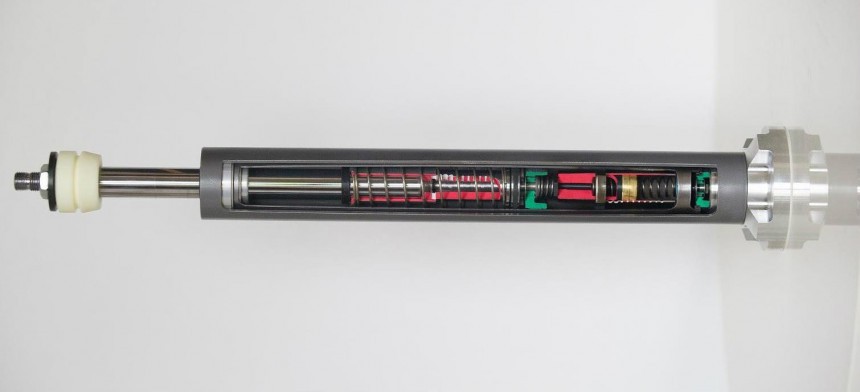As a car manufacturer, Citroen made a name for itself in 1934 with the advent of the Traction Avant. 20 years after that seminal moment and the takeover of the company by Michelin, Citroen wowed car-loving ladies and gents with the hydropneumatic suspension. More than six decades later, this type of suspension will be put to rest by progressive hydraulic cushions.
Before we dwell deeper into the innards of the progressive hydraulic cushion suspension, I need to mention that the hydropneumatic system is the labor of love of Paul Magès. The 1954 Citroen Traction Avant 15H is the earliest model to adopt the then-new technology, while the 1955 Citroen DS made it popular.
Over the years, automakers such as Peugeot, Rolls-Royce, Mercedes-Benz, and Maserati embraced hydropneumatics. At the present moment, the C5 is available with the latest development in the realm of hydropneumatics. More surprisingly, the JCB Fastrac tractor is available with hydropneumatic self-leveling rear suspension. However, the time has come for Citroen will bid farewell to this avant-garde technology.
Citroen has recently demonstrated the benefits of switching to progressive hydraulic cushions with the Citroen Advanced Comfort Lab prototype, a.k.a. the most comfortable Citroen C4 Cactus in the world.
Introduced in 2014, the Citroen C4 Cactus is one of, if not the funkiest compact crossovers on sale in Europe. This one, though, is a little bit more special. The “focal point of the brand’s redefinition of on-road comfort” is a prototype that incorporates three innovations developed with the sole purpose of comfort.
When a car drives on a bumpy road, the shock absorbers do the best they can, yet the disturbance passes through the vehicle’s body and into the cabin. Thus, vibrations are felt by the driver and occupants through the seats of the car. The first of three innovations that addresses this problem is structural body bonding.
According to Citroen, structural bonding reduces the force of the energy that’s created by imperfect road surfaces and transferred to the car’s body. But what exactly is structural bonding? The structural parts of the car are bonded together using adhesive and an electrical weld point is positioned in those places where the line of adhesive is interrupted. When all is said and done, this is pretty straightforward stuff.
The unique bonding process of the prototype improves overall body rigidity by “around 20 percent on average.” Another benefit is weight reduction, while the ultimate advantage is cost thanks to fewer welds.
The second of three innovations integrated into the Citroen Advanced Comfort Lab are the seats. More eagle-eyed Citroen enthusiasts may identify some visual similarities between the seats that equip this prototype and those found in the CX and XM, the successors of the bite-the-back-of-your-hand beautiful DS.
Taking inspiration from the bedding industry, Citroen decided to use different types of foam (polyurethane, viscoelastic, and textured foam) and foam densities for different parts of the seats. This kind of seat is made to adapt to the body shape of each person and gain its original shape from one person to the other. Thus, it’s not that far-fetched to compare this innovative seating solution with a memory-foam mattress.
By all means, these seats also reduce on-road vibrations for the occupants.
The third innovation is the most important to the ride quality. What makes progressive hydraulic cushions different from the suspension system one may find on a regular car? Well, a conventional suspension system comprises of shock absorbers, springs, and mechanical stops. The still-in-development progressive hydraulic cushion suspension system, however, adds two progressive hydraulic cushions to the menu.
One of the two progressive hydraulic cushions is located at the top of the suspension unit, the other at the bottom. One progressive hydraulic cushion is there for rebound, the other for compression. Depending on the surface of the road, the innovative suspension developed by Citroen works in two ways.
In cases of slight compression and rebound (as in when driving on good road surfaces), the shock absorbers and springs control vertical movement without the help of the Citroen progressive hydraulic cushions. In this instance, the cushions are there to smoothen the ride, thus delivering a “magic carpet ride” similar to that offered by the Hydractive 3+ hydropneumatic suspension of the second-generation Citroen C5.
In cases of more serious compression and rebound (think potholes and other asphaltic imperfections), the shock absorbers and springs work together with the Citroen progressive hydraulic cushions. Because they are located at the end of the vehicle’s suspension travel, cushions slow movement in a more gradual manner than a conventional mechanical stop. Speaking of the devil, mechanical stops absorb energy then partially return it. Citroen progressive hydraulic cushions, on the other hand, absorb the energy then dissipate it.
And that is what makes progressive hydraulic cushions the next big thing in suspension technology.
Other than Citroen, the standalone DS brand and Peugeot are slated to embrace this technology.
Over the years, automakers such as Peugeot, Rolls-Royce, Mercedes-Benz, and Maserati embraced hydropneumatics. At the present moment, the C5 is available with the latest development in the realm of hydropneumatics. More surprisingly, the JCB Fastrac tractor is available with hydropneumatic self-leveling rear suspension. However, the time has come for Citroen will bid farewell to this avant-garde technology.
Citroen has recently demonstrated the benefits of switching to progressive hydraulic cushions with the Citroen Advanced Comfort Lab prototype, a.k.a. the most comfortable Citroen C4 Cactus in the world.
Citroen Advanced Comfort Lab
When a car drives on a bumpy road, the shock absorbers do the best they can, yet the disturbance passes through the vehicle’s body and into the cabin. Thus, vibrations are felt by the driver and occupants through the seats of the car. The first of three innovations that addresses this problem is structural body bonding.
According to Citroen, structural bonding reduces the force of the energy that’s created by imperfect road surfaces and transferred to the car’s body. But what exactly is structural bonding? The structural parts of the car are bonded together using adhesive and an electrical weld point is positioned in those places where the line of adhesive is interrupted. When all is said and done, this is pretty straightforward stuff.
The unique bonding process of the prototype improves overall body rigidity by “around 20 percent on average.” Another benefit is weight reduction, while the ultimate advantage is cost thanks to fewer welds.
Taking inspiration from the bedding industry, Citroen decided to use different types of foam (polyurethane, viscoelastic, and textured foam) and foam densities for different parts of the seats. This kind of seat is made to adapt to the body shape of each person and gain its original shape from one person to the other. Thus, it’s not that far-fetched to compare this innovative seating solution with a memory-foam mattress.
By all means, these seats also reduce on-road vibrations for the occupants.
Citroen Progressive Hydraulic Cushion Suspension System
One of the two progressive hydraulic cushions is located at the top of the suspension unit, the other at the bottom. One progressive hydraulic cushion is there for rebound, the other for compression. Depending on the surface of the road, the innovative suspension developed by Citroen works in two ways.
In cases of slight compression and rebound (as in when driving on good road surfaces), the shock absorbers and springs control vertical movement without the help of the Citroen progressive hydraulic cushions. In this instance, the cushions are there to smoothen the ride, thus delivering a “magic carpet ride” similar to that offered by the Hydractive 3+ hydropneumatic suspension of the second-generation Citroen C5.
In cases of more serious compression and rebound (think potholes and other asphaltic imperfections), the shock absorbers and springs work together with the Citroen progressive hydraulic cushions. Because they are located at the end of the vehicle’s suspension travel, cushions slow movement in a more gradual manner than a conventional mechanical stop. Speaking of the devil, mechanical stops absorb energy then partially return it. Citroen progressive hydraulic cushions, on the other hand, absorb the energy then dissipate it.
And that is what makes progressive hydraulic cushions the next big thing in suspension technology.
And On That Bombshell...
... the French automaker intends to roll-out the three innovations incorporated in the Advanced Comfort Lab prototype “across the entire range, whatever the price of the model.” In other words, from the C1 city car upwards. Late 2017 is when Groupe PSA will bring progressive hydraulic cushions to market.Other than Citroen, the standalone DS brand and Peugeot are slated to embrace this technology.
